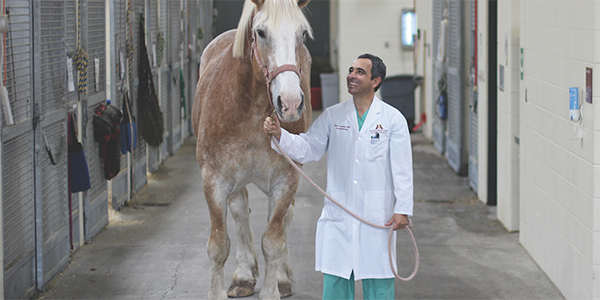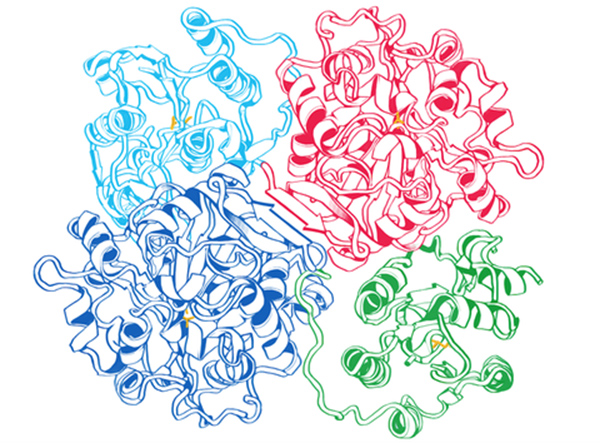Could Blocking a Certain Enzyme Help Laminitis, and Have Applications For Human Arthritis?
By: Carolyn Bernhardt, University of Minnesota
The Answer Is In The Enzymes
Alonso Guedes, DVM, MS, PhD, is inhibiting an enzyme found in all mammals to advance pain management in veterinary, and eventually, human medicine.
In the 1980s, researchers at the University of California, Riverside, were looking for a way to control insects and found an enzyme—called JHEH—that, when inhibited, prevents caterpillars from becoming butterflies. This work led to the discovery of an equivalent enzyme in mammals, called soluble epoxide hydrolase or sEH.
After spending a few years at UC Davis, Alonso Guedes, DVM, MS, PhD, associate professor of Anesthesia and Pain Medicine in the Department of Veterinary Clinical Sciences, joined the University of Minnesota, where he is working to further understand how to use sEH to advance pain management in veterinary—and eventually human—medicine.
“We mammals have a similar enzyme,” Guedes says. “However, most of us don’t undergo metamorphosis,” he adds with a smile. “We autoregulate and self-repair, and, in mammals, the presence of this enzyme has the opposite effect—it diminishes the body’s ability to self-repair. Inhibiting it actually allows our cells to do their work.”
Guedes and his team are working to understand how blocking this enzyme can help improve mammal health, starting with horses suffering from laminitis—a severely painful disease in the hoof that makes horses (and other hoofed animals such as sheep, goats, and cattle) unable to walk, develop, or behave normally. Most horses with laminitis do not respond well to current pain medications and treatments, and euthanasia is currently the primary outcome for severe cases.
“A horse’s hoof is like a human nail, except they stand on it all day long,” says Guedes. “The hoof wall is attached to the bone by a very tough tissue that interconnects like a zipper, which is called the digital laminae. Certain proteins hold the digital laminae together, and when there is inflammation, such as with laminitis, those proteins break down and the hoof’s connection to the bone breaks apart.”
Guedes and his team want to know if sEH is involved in the breakdown of these important proteins, and they are already seeing evidence confirming this in mice. “It seems like inhibiting the enzyme could potentially protect some of the linking proteins that hold the tissues together in the hoof,” he says. They’ve developed a compound that inhibits the enzyme and allows for more blood flow and delivery of nutrients to a harmed area.
But crucial questions remain. Primarily, would inhibiting the enzyme allow the body to repair already-damaged proteins and cells? Secondly, at what rate does inhibiting the enzyme slow the process of deterioration? But most importantly, could we prevent damage and deterioration by intervening early on?
At the University of Minnesota College of Veterinary Medicine’s Large Animal Hospital, Guedes has used the experimental compound on a few different equine patients with laminitis as well as arthritis. In many cases, the compound works in conjunction with a pain medication to provide the animal both pain relief and bodily recovery. Results for many of Guedes’ patients have been visible within a matter of days.
A similar compound has been tested in human clinical trials and resulted in improved outcomes for patients with neuropathy. Its effect on arthritis in horses could have implications on human arthritis in the future, too. Recently, Guedes and Troy Trumble, DVM, MS, PhD, associate professor in the Department of Veterinary Population Medicine, were awarded two small, but critical, grants to further their research into this compound’s ability to inhibit sEH and alleviate pain and mobility limitations for equine patients with arthritis.
“We want to understand how this enzyme is working and how we can fine tune it to better use it to promote health,” says Guedes.
Get involved
If you are interested in supporting Alonso Guedes’ work, please contact Mindy Means, development officer at the College of Veterinary Medicine, at 612-626-5482 or mkmeans@umn.edu.












